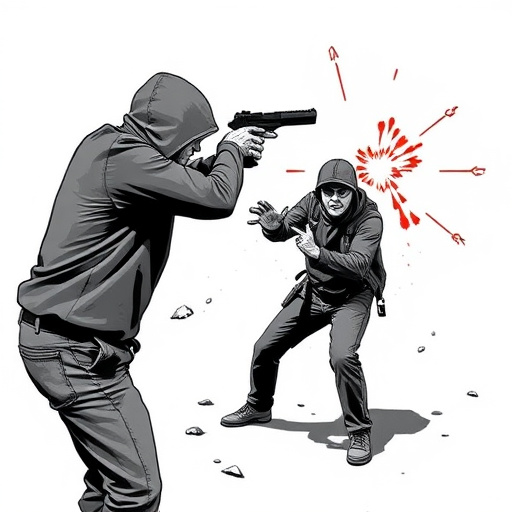Low light pepper spray canisters are specialized tools for riot control in dim or dark conditions, featuring advanced formulations that disrupt rioters' formations by irritating eyes and respiratory systems. Their discreet design, optimized range, and reduced wind impact enable officers to employ precise tactics while maintaining safety and surprise. Effective deployment requires strategic training, tactical knowledge, accurate distance judgment, and de-escalation methods to minimize risk to both officers and bystanders in challenging low light environments.
“Uncovering the power of low light pepper spray tactics, this comprehensive guide explores the essential tool for riot control—the inflammatory spray canister. With a focus on understanding its unique design and functionality in challenging conditions, we delve into tactical applications, offering insights on optimal deployment strategies during low-light scenarios.
Additionally, we address critical safety considerations and training protocols to ensure effective use, emphasizing responsible and strategic riot control practices.”
- Understanding Low Light Pepper Spray Canisters: Their Design and Functionality
- Tactical Applications: When and How to Deploy in Low Light Conditions
- Safety and Training Considerations for Effective Riot Control
Understanding Low Light Pepper Spray Canisters: Their Design and Functionality
Low light pepper spray canisters are specialized tools designed for riot control and tactical operations in dimly lit or complete darkness scenarios. Unlike traditional pepper spray, which relies on visibility to affect its target, low light varieties utilize advanced formulations that remain effective even under poor lighting conditions. These canisters are engineered with a focus on discreetness and accuracy, allowing officers to employ precise pepper spray tactics without compromising safety or warning the subjects.
The design of low light pepper spray canisters incorporates features like specialized nozzles, optimized range, and reduced wind impact. The functionality is based on releasing a fine mist of highly concentrated capsaicin oil, which irritates the eyes and respiratory system. This design ensures that even in low light environments, officers can effectively disable individuals without causing permanent harm, making them invaluable tools for police forces and security personnel worldwide.
Tactical Applications: When and How to Deploy in Low Light Conditions
In low light conditions, such as night-time operations or environments with heavy fog or smoke, tactical deployment of riot control inflammatory spray canisters becomes even more critical. Law enforcement and security personnel must be adept at utilizing low light pepper spray tactics to maintain control effectively. The strategic use of these devices can disrupt rioters’ formations, impair their visibility, and reduce the risk of physical confrontations, making it a valuable tool in challenging circumstances.
To maximize effectiveness during these operations, officers should aim for the face and eyes, as these areas are highly sensitive to capsaicin. Since visibility is limited, tactical training becomes crucial. Practices include using night vision equipment, practicing in simulated low-light scenarios, and learning to judge distances and wind direction accurately. Quick deployment and precise targeting are key to successfully disorienting rioters without endangering innocent bystanders.
Safety and Training Considerations for Effective Riot Control
In the high-pressure environment of riot control, where quick thinking and precise action are crucial, proper safety measures and training cannot be overstated. Law enforcement officers and security personnel must undergo comprehensive instruction in the handling of inflammatory spray canisters, especially when operating in low light conditions. This includes understanding the range and effectiveness of various pepper spray agents, as well as learning effective tactical techniques for optimal deployment during night-time or enclosed space operations.
Regular simulations that mimic riot scenarios, including training in low light pepper spray tactics, are essential. These exercises should focus on practical applications, ensuring officers know how to accurately assess a situation, choose the right canister, and deploy the spray with minimal risk to bystanders and themselves. It’s equally vital to discuss de-escalation methods alongside physical control techniques to prevent escalation and ensure public safety.
Low light pepper spray canisters, with their specialized design and functionality, offer a powerful tool for riot control. Understanding their unique features and tactical applications allows law enforcement officers to effectively deploy them in challenging low light conditions. Proper safety measures and comprehensive training are essential to ensure the safe and responsible use of these canisters, making them invaluable assets in maintaining public order during peaceful protests or civil unrest. By integrating low light pepper spray tactics into their repertoire, law enforcement agencies can enhance their riot control capabilities and protect both officers and civilians.
